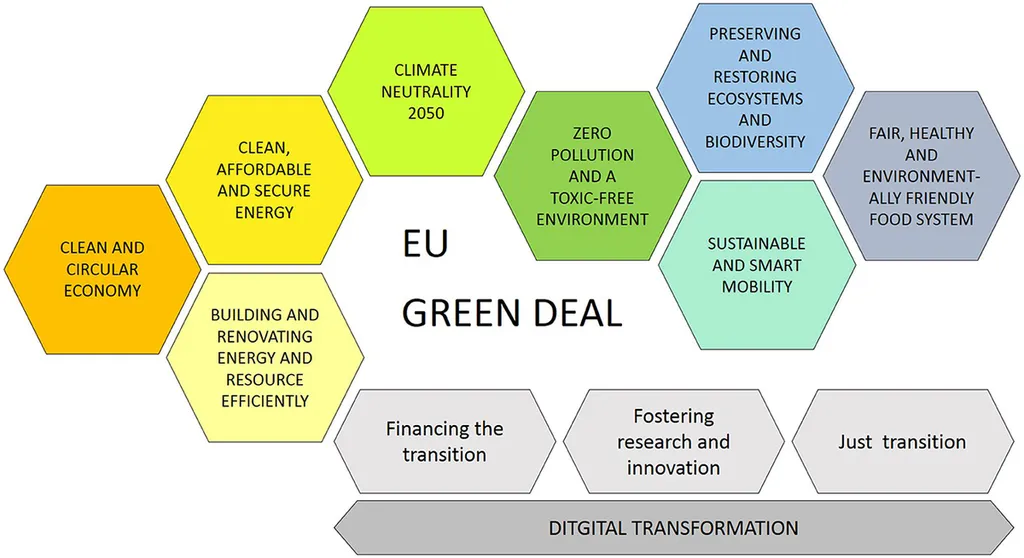In an era where digital transformation and sustainability are no longer optional but imperative, a groundbreaking study led by Masoumeh Pourbagher, a Master’s student in Business Management and Marketing at Povidengad, Chalus, Iran, is set to redefine how businesses approach green digital innovation. Published in the journal مطالعات مدیریت توسعه سبز, which translates to “Studies in Green Development Management,” the research introduces a comprehensive model for a green digital identity, poised to revolutionize the energy sector and beyond.
Pourbagher’s study, which meticulously reviewed 123 scientific articles, theses, and books, identifies five critical dimensions that form the backbone of a green digital identity model: environmental sustainability, use of clean energy sources, reduction of e-waste, development of green technologies, and promotion of awareness and education. Each dimension is underpinned by specific variables that collectively drive technological innovation towards a greener future.
“Environmental sustainability factors, such as reducing greenhouse gas emissions and sustainable management of natural resources, are pivotal in shaping a green digital identity,” Pourbagher explains. Her research underscores the importance of designing sustainable digital systems and responsible interaction with digital technologies, which can significantly impact the energy sector’s carbon footprint.
The study also highlights the role of clean energy sources in fostering a green digital identity. Pourbagher emphasizes the need for optimizing energy consumption and developing innovative technologies in energy storage. “The integration of renewable energy sources and the progress in smart distribution networks are crucial for creating a sustainable digital ecosystem,” she notes.
Reducing e-waste is another critical aspect of the model. Pourbagher’s research suggests that sustainable design, recycling, and the repair and refurbishment of electronic products can substantially minimize electronic waste. “Optimal use of electronic products and the design of low-power digital systems are essential for reducing e-waste and promoting a greener digital environment,” she adds.
The development of green technologies is a cornerstone of the model. Pourbagher’s study identifies the use of energy-efficient sensors and controllers, sustainable waste management technologies, and the application of augmented and virtual reality as key drivers of green technological innovation. “These technologies can transform the energy sector by enhancing efficiency and reducing environmental impact,” she states.
Promoting awareness and education is the final dimension of the model. Pourbagher advocates for creating online communities and green loyalty programs to encourage consumers to adopt sustainable practices. “Education and awareness about green technologies are vital for building a green organizational identity and fostering a culture of sustainability,” she concludes.
The implications of Pourbagher’s research are far-reaching, particularly for the energy sector. By adopting the green digital identity model, energy companies can enhance their sustainability efforts, reduce operational costs, and meet the growing demand for eco-friendly products and services. The model also provides a roadmap for businesses to navigate the complexities of digital green innovation and meet dynamic consumer demands.
As the world continues to grapple with the challenges of climate change and digital transformation, Pourbagher’s study offers a timely and innovative solution. Her research not only shapes the future of green digital innovation but also paves the way for a more sustainable and technologically advanced energy sector.

